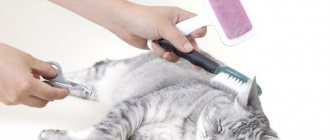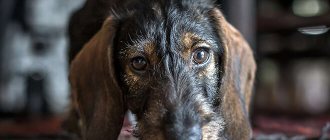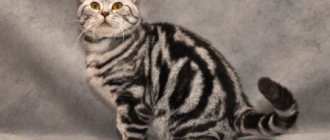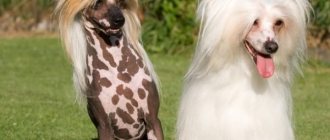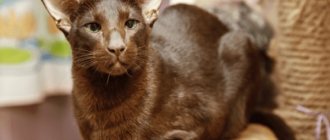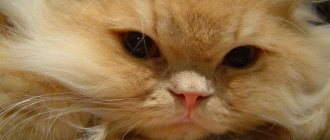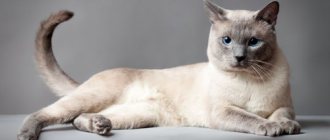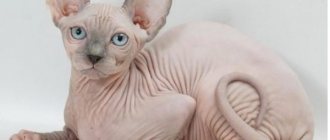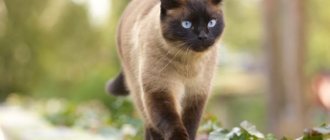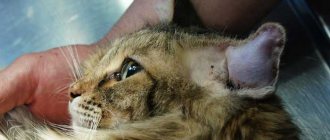When you think of cats, the first things that come to mind are a few basic colors and coat patterns that are most commonly found. But besides them, there are also some rare coat colors. The quality of an animal's coat is influenced by both genetic aspects and lifestyle. An important element is the pet’s nutrition; cat food from the Canadian manufacturer Champion PetFoods will be an excellent balanced basis for the animal’s diet.
Some cat breeds consist solely of rare coat colors and are really hard to find. Let's figure out what these colors are?
Cream
The cream color, which is the result of a dilution of the red gene, is found in a wide variety of varieties, from completely cream tabby cats to color-point beauties. It looks great on both short and long hair, and when the rays of the sun fall on an animal wearing such a coat, it appears pink.
Sometimes cream tabby cats are found in free populations, where there are many animals of red, in common parlance, ginger color.
Color classification
In felinology, all unusual and varied colors of cats are classified into two types:
- Plain.
- Spotted.
A completely monochromatic coat is quite rare; most cats have spotted coats. Even if the animal’s body has a uniform color, the tips of the paws, tail, and muzzle may have stains, spots, and other distinctive tones.
Each shade is assigned not only names, but also numbers. Cats participating in competitions and exhibitions have a digital code in their passport, indicating all the nuances of their appearance.
© shutterstock
Color of Siamese cats
The unusual coloring of Siamese cats is due to the fact that the mutation responsible for the unusual coloring is very sensitive to temperatures. In these cats, the enzyme known as tyrosinase, which is responsible for the production of the dark pigment melanin, can work exclusively in colder temperatures. This explains why all the limbs of Siamese cats - paws, tail, ears, muzzle - are darker in color.
Siamese kittens are known to be born white because their bodies are not yet exposed to colder temperatures. After birth, their paws and tails begin to gradually darken.
Rare colors of cats and cats
Each breed of cat has its own calling card: Persians have long, thick hair, Munchkins have short legs, Maine Coons have an impressive size, not to mention the characteristic proud expression of their muzzle. But there are breeds that stand out not so much for the features of their structure as for the color of their coat.
Nature has endowed cats with a genome that allows them to have fur in a variety of shades: from red to golden, from pure blue to smoky white, from monochromatic to multi-colored. But even among such diversity, the rarest cat colors can be distinguished.
Cinnamon color
This color is literally translated from English as “cinnamon”. It has a reddish-brown tint, easily distinguishable from chocolate brown or cream. The nose and paw pads of cats of this color are pinkish-brown, while on their “dark” counterparts they are the same color as their fur or slightly darker. Cinnamon is not a variety of red or chocolate, it is a separate rare color that appeared as a result of the painstaking work of British felinologists. It is characteristic of this breed, but it is very difficult to obtain.
Lilac color
The lilac color is truly amazing: it is unusual to see an animal with pink-violet fur. Depending on the intensity, it is divided into isabella - the lightest, lavender - cooler, and lilac - a warm color with a slight “gray hair”. At the same time, the cat’s nose and paw pads have a similar, pale purple hue. Matching the color of the coat and these delicate areas of the body is considered a sign of a noble color. This is what the British and, oddly enough, Oriental cats can boast of.
Spotted color
Rare cat colors are not only monochromatic. When we think of spotted color, we immediately think of wild cats, such as leopards, manuls and other representatives of the cat family. But it can also be found in domestic Egyptian Mau and Bengal cats. This color is found in silver, bronze and smoky variations.
The Silver Mau has a light gray coat with a pattern of small dark circles. The skin around her eyes, mouth and nose is black. The main color of the Bronze Mau's coat is dark brown on the back and legs and creamy light on the belly. The body is decorated with brown patterns, and the face has ivory-colored skin. And the smoky Mau has an almost black coat with a silvery undercoat, on which there are almost no spots visible.
Tortoiseshell marbled color
Marble color, like tortoiseshell, is quite common. However, their combination is a rare phenomenon, moreover, it is characteristic only of cats; there are no cats of this color. An intricate pattern on a background of two colors looks unusual and very impressive.
It can also be blue, in which case there is a blue pattern on a warm beige background. There is also a chocolate marbled color. Such cats have red fur with richer “stains” of the same color and at the same time milk chocolate-colored fur with dark brown
Cat fur has an interesting feature. Not only rare colors, but also the most common ones appear only by 6 months, and in some breeds a rich color is formed only by one and a half years. Unscrupulous breeders like to take advantage of this, offering to buy an outbred kitten under the guise of a purebred and rare one. Remember: rare cat colors are obtained only from experienced felinologists who know their business well, do not skimp on their pets and devote a lot of time to them.
Do you want me to make more posts like this!? Write in the comments!
Faun
Looks like lilac, but is actually a lightened version of cinnamon, or cinnamon color. It is found in Abyssinian cats and has a light beige tint that can be compared to coastal river sand. You can read more about it in our article “Fawn color in Abyssinian cats.”
Types of colors
Thanks to the work of breeders, we can now observe countless color variations.
- tabby,
- solid (solid),
- piebald,
- silver,
- colorpoint,
- acromelanic.
Tabby is a fur pattern that can be present in animals of any type of color. There are several options:
- spotted,
- striped (brindle),
- marbled (spiral stripes along the body, triple stripes along the ridge),
- ticked (present only on the muzzle; uneven coloring is also characteristic).
Solid. Characterized by an even distribution of melanin and the absence of spots and marks on the animal. Each hair is evenly dyed to the very base of the root. The following are the main types of solid colors:
- black,
- red,
- chocolate,
- tortoiseshell (red and black),
- blue,
- cream,
- tortoiseshell (blue and cream).
Piebald. Assumes the presence of colored areas on a light background.
- van, the entire fur coat, with the exception of the tail, is light. There may also be spots on the head and neck,
- harlequin, uncolored dominates, but there are also small colored areas throughout the body,
- bicolor, this subspecies is distinguished by small spots on various parts of the body. There are several varieties of bicolors, tuxedo (uncolored areas are located on the chest and paws), with gloves and with a medallion, paws and chest are white,
- tricolor, a combination of white and tortoiseshell. The first, as a rule, prevails.
Silver. Such kittens are characterized by a zoned distribution of pigment in each of the hairs, as a result of which some parts of the body remain completely unpigmented.
This group is also divided into:
- smoky (half the hair is colored, and the other half is undyed),
- silver tabby (these whiskers, in addition to the zonal coloring of each of the hairs, also have a pattern on their fur coat),
- shaded (most of the hair remains white),
- chinchilla (only a tiny tip is painted).
Acromelanic (Colorpoint), paws, muzzle and tail have a bright and rich color, body is light.
Chinchilla
An extremely complex color, the genetics of which are not fully understood. Even experienced breeders who have been coloring for a long time have problems. With a chinchilla color, the base of the hairs is almost white, and the tips are colored in one of the usual colors. The whole secret is in the ratio of white and dyed, that is, where in the hair the transition begins. This is what determines whether the animal will look as magical as in these photos.
You won’t find chinchillas among outbred cats, but there are such animals in nature. The rodent that gave the color its name, without any effort from the breeders, has a coat of such a rare color.
Larisa Solodovnikova
